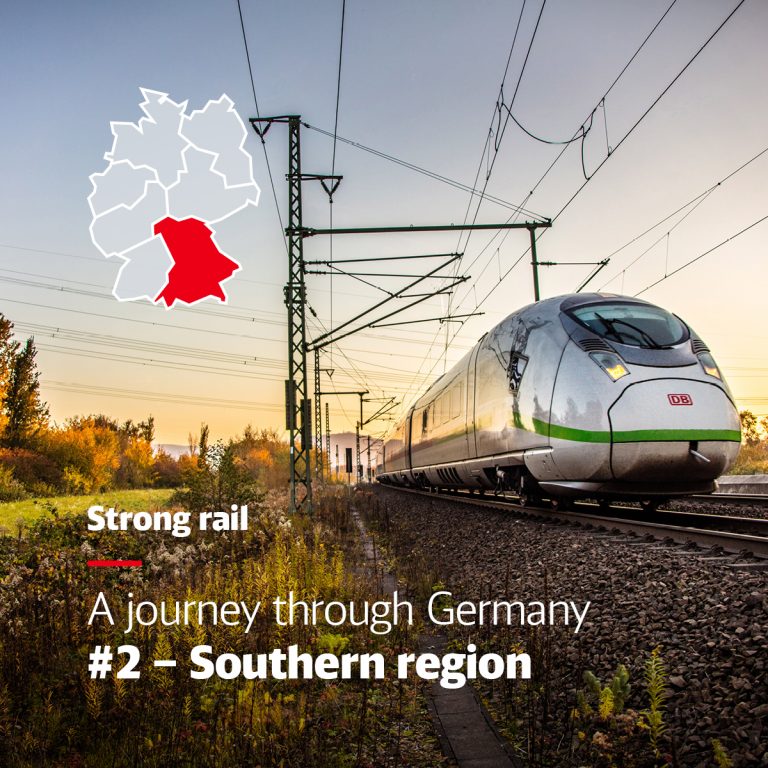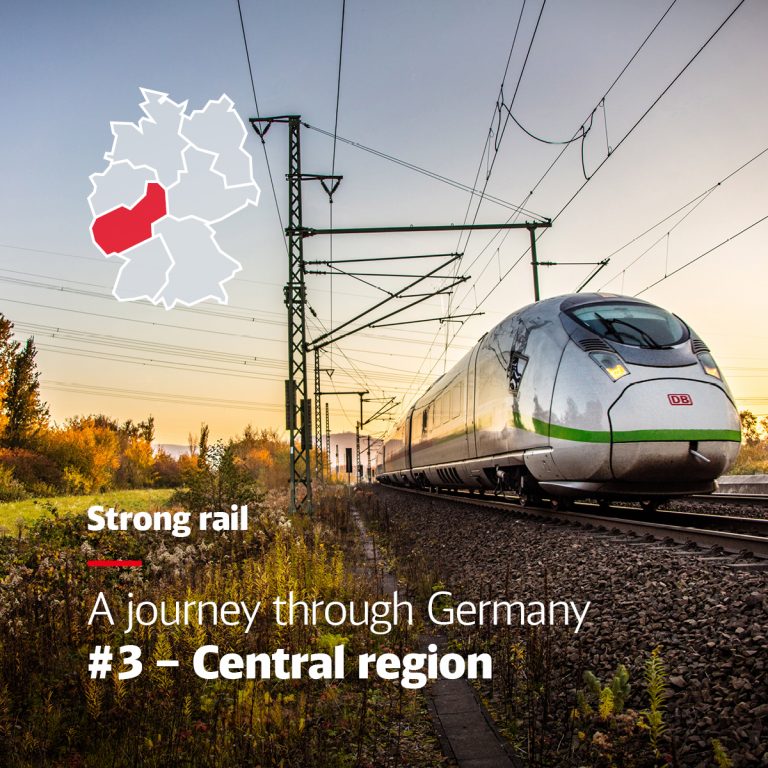The transport sector has a significant impact on climate change. That’s why Deutsche Bahn (DB AG) wants to become climate-neutral by 2040. The German government has issued targets for rail transport to help reach this goal. DB Engineering & Consulting (DB E&C) is involved in a number of projects throughout Germany that combine sustainable transport and infrastructure that meet needs in an exemplary fashion – including in Southwest Germany.
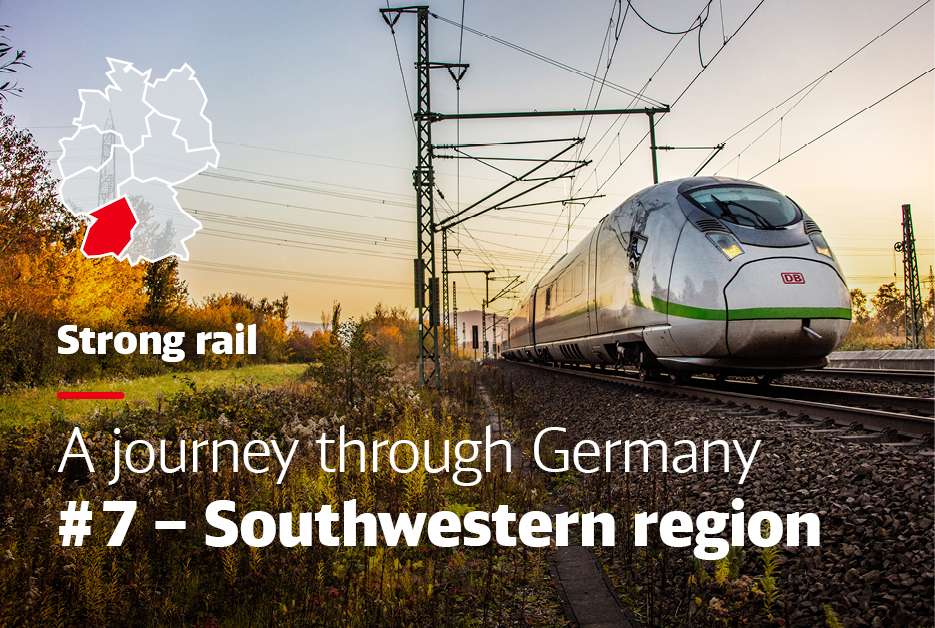
Contact
DB Engineering & Consulting
EUREF-Campus 14
10829 Berlin
Germany
Section between Karlsruhe and Rastatt South – trains to travel at 250 km/h in the future
The upgraded and new-build line between Karlsruhe and Basel is the heart of Europe’s most important rail line. The project is divided into nine sections; the first is Karlsruhe-Rastatt South. The Rastatt tunnel is also located on the 24.3 kilometer route. At over 4,270 meters long, it is the third largest engineering structure in the major Karlsruhe–Basel project. This section is divided into three planning approval sections: Bashaide branch line, Bashaide – Ötigheim and Ötigheim – Rastatt South. In the future, trains will be able to travel at up to 250 kilometers per hour on these sections, including in the Rastatt tunnel. At the same time, noise pollution for local residents will be reduced because new noise barriers and walls will significantly reduce noise along 1.7 kilometers. DB E&C has assumed responsibility for construction supervision, design, substance quality checking and consulting in all construction phases for parts of section 1.
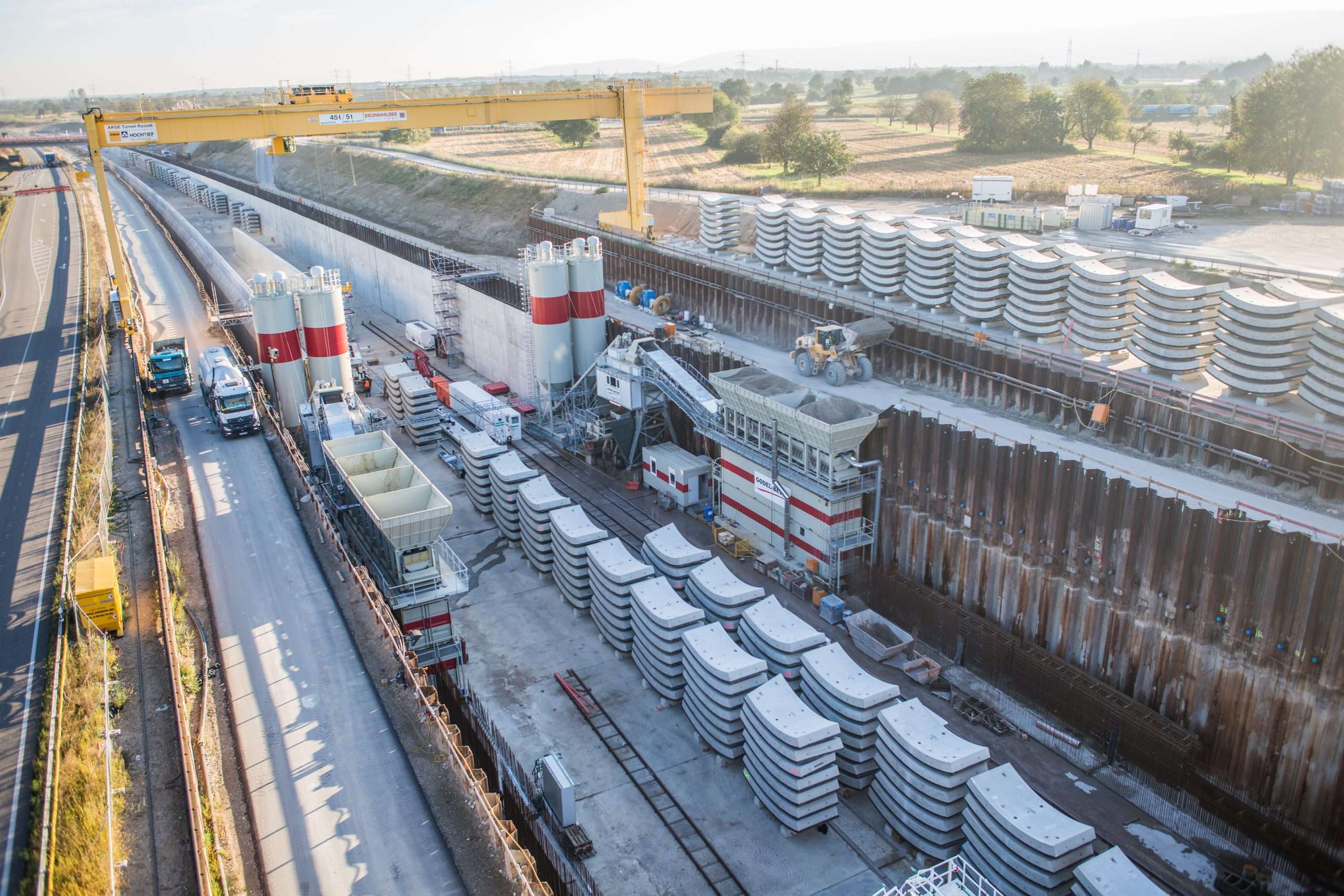
“Kombilösung Karlsruhe”: a city strengthens its tram expertise with a combined solution
Karlsruhe’s trams have always been at the forefront when it comes to innovative concepts and smart solutions. The rapid increase in passenger numbers made it necessary to restructure the transport concept. The result was the “Kombilösung.” As part of this combined solution, the 10-lane Kriegsstrasse was completely redesigned along a 1.8 kilometer section running through the city. As of the end of 2021, a tram line now runs between bike paths, tree-lined avenues and areas where motor vehicle traffic has been significantly reduced. A continuous car tunnel runs underneath the section with entrances and exits for city and local traffic. DB E&C was responsible for project design for the transport infrastructure for the roads, tram line and 54 stops; construction state planning; and traffic management for motor vehicle traffic, bicycle traffic and pedestrians during construction, including developing plans for road markings and traffic signs to maintain traffic during construction The result: The Karlsruhe transport association network is now significantly more efficient. Transport is even faster, more punctual and safer for passengers, who now travel along a landscaped tram line between avenues of trees instead of on a road with up to ten lanes. And there is plenty of space for cyclists and pedestrians and a much more pleasant atmosphere for residents.
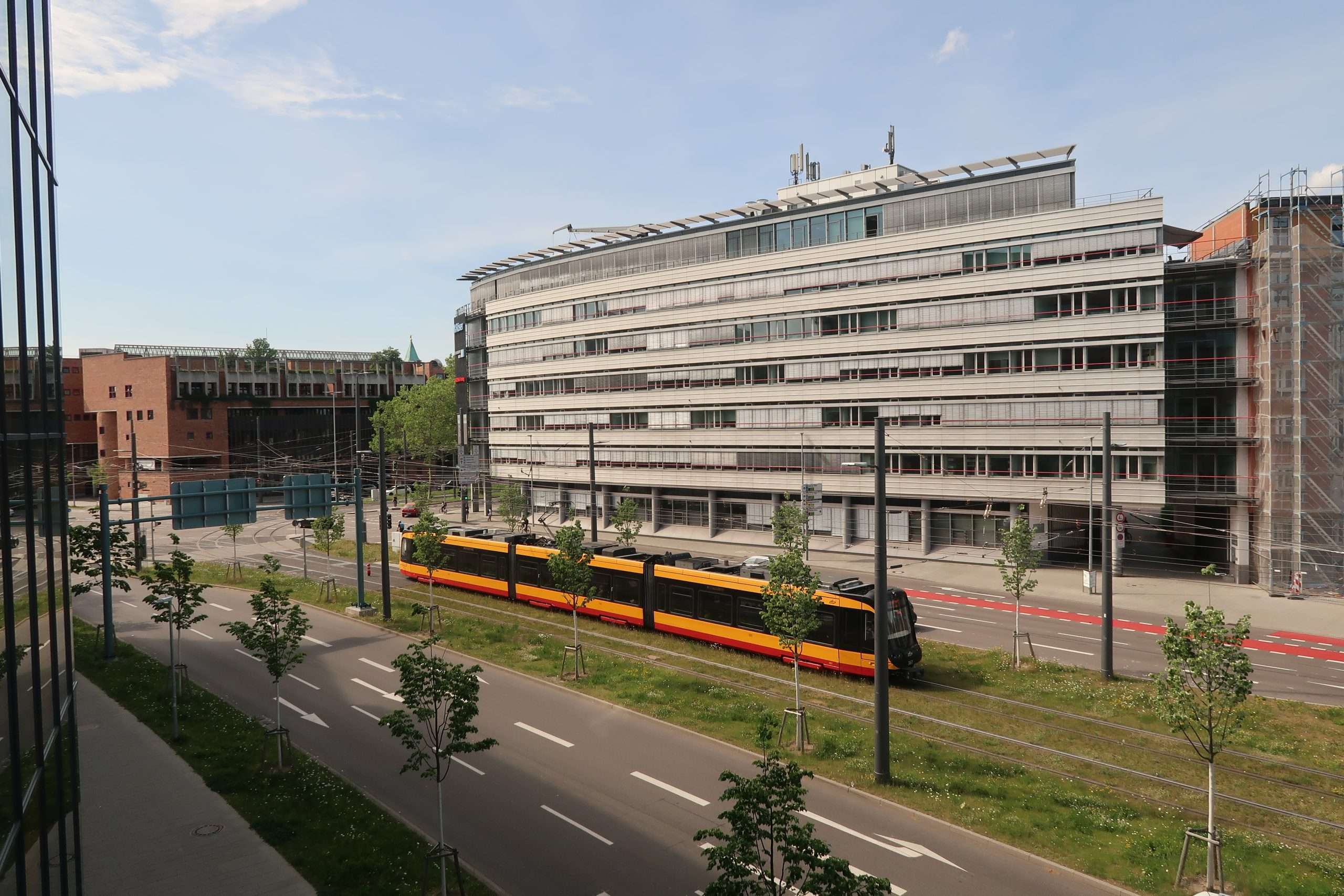
Stuttgart-21 Main Station: making a transport hub for the future
The Stuttgart rail hub is undergoing a comprehensive redesign as part of the Stuttgart 21 project. The plan is to convert the existing 16-track stub station into an eight-track lower-level through station, which will be rotated by around 90 degrees from its current orientation. The infrastructure and the through station will then have sufficient capacity to accommodate the sustainable traffic growth of the future. The new main station will be connected by underground feeder lines from Feuerbach, Bad Cannstatt, Obertürkheim, Untertürkheim and the Filder plateau. The storage sidings and maintenance facilities at the edge of Rosenstein Park will be relocated to the site of the current Untertürkheim freight yard. The current construction project comprises the tunnel at the north end , which consists of the northern access routes to Stuttgart Main Station, the station concourse with eight tracks and four platforms, the tunnel at the south end and a pre-stressed concrete bridge over the S-Bahn in the lower level (S-Hbf-Tief). DB E&C has played a significant role in the Stuttgart 21 project. It is responsible for geodetic services, overall design, planning approval for the demolition of the old Stuttgart Main Station and construction supervision for the entire project.
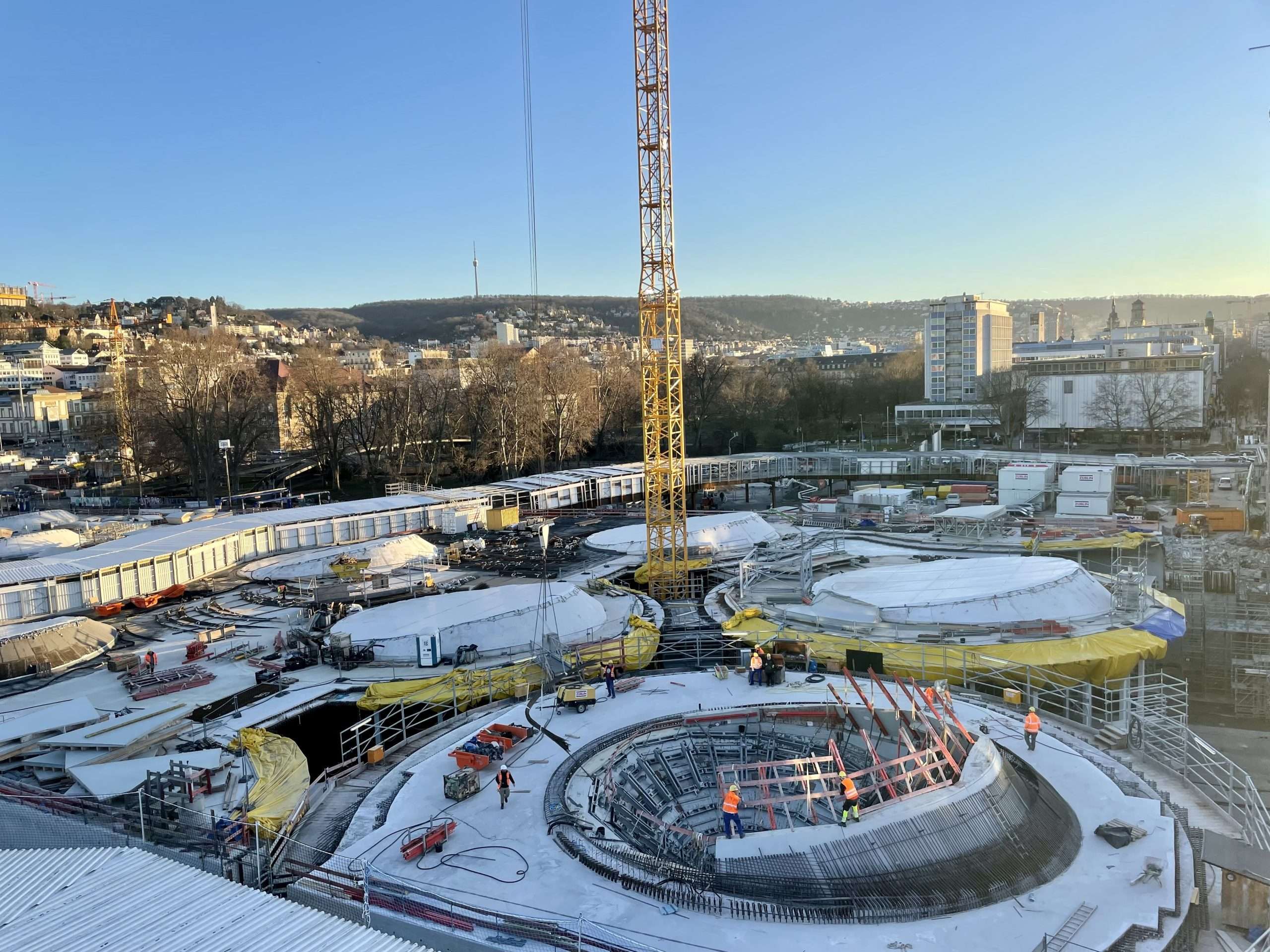
Pfaffensteig tunnel: a megaproject gets underway
The Gäubahn line will run through the Pfaffensteig tunnel, which is nearly 11.5 kilometers long, from east to west under the Filder plateau and will terminate at the planned long-distance station at Stuttgart Airport. From the airport, travelers will then be able to travel onward to the new Stuttgart 21 underground train station, for example. Two single-track tubes are planned for the tunnel, and the design speed of the line underground is significantly higher than would have been possible if the route were all above ground. The Pfaffensteig tunnel is a key component of the northern section of the Gäubahn upgraded line, and DB E&C was tasked with initial planning for the tunnel. From November 2021 to the end of April 2022, a design team that at times numbered more than 90 people used pre-construction information to create a full requirements model in record time and on schedule. DB E&C will continue to collaborate with DB Project Stuttgart-Ulm GmbH beyond 2022. The expansion of the long-distance rail connection between Stuttgart and the Swiss border, and the upgraded Gäubahn line with the Pfaffensteig tunnel, was earmarked for a high-priority upgrade as part of Germany’s Federal Transport Infrastructure Plan.
Germany needs Strong Rail for people, for the climate and for the economy. And southwestern Germany is well on its way. DB E&C is making a major contribution in the region to strengthening sustainable infrastructure, accommodating rising passenger numbers and finding smart ways of managing economic flows.

